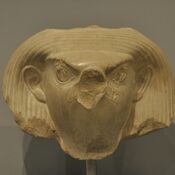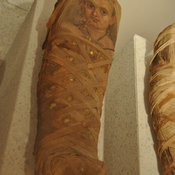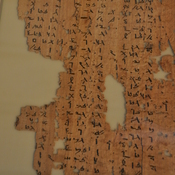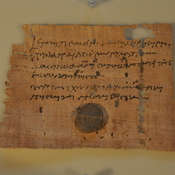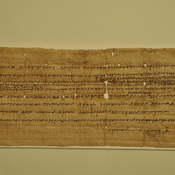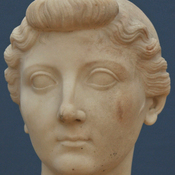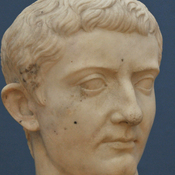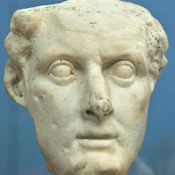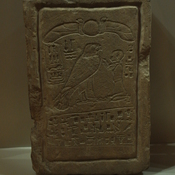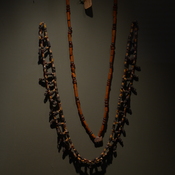Il n'y a pas une annotation en français. Présenté est une annotation en Anglais.
The building of Herodotus` 'Labyrynth' is a huge mortuary temple that originally stood adjacent to this pyramid. Moreover, they [Egyptians] decided to preserve the memory of their names by a common memorial, and so they made a labyrinth62 a little way beyond lake Moeris and near the place called the City of Crocodiles. I have seen it myself, and indeed words cannot describe it; if one were to collect the walls and evidence of other efforts of the Greeks, the sum would not amount to the labor and cost of this labyrinth1Herodotus' description of the Egyptian Labyrinth inspired some central scenes in Bolesław Prus' 1895 historical novel, Pharaoh. Amenemhat III r. c. 1860 BC to c. 1814 BC,
See:
- Herodotus, The Histories, with an English translation by A. D. Godley. Cambridge. Harvard University Press. 1920., Book II, pp. 160–61. - http://www.perseus.tufts.edu/hopper/text?doc=Perseus%3Atext%3A1999.01.0126%3Abook%3D2&force=y
Références
- ↑Herodotus II
The building of Herodotus` 'Labyrynth' is a huge mortuary temple that originally stood adjacent to this pyramid. Moreover, they [Egyptians] decided to preserve the memory of their names by a common memorial, and so they made a labyrinth62 a little way beyond lake Moeris and near the place called the City of Crocodiles. I have seen it myself, and indeed words cannot describe it; if one were to collect the walls and evidence of other efforts of the Greeks, the sum would not amount to the labor and cost of this labyrinth1Herodotus' description of the Egyptian Labyrinth inspired some central scenes in Bolesław Prus' 1895 historical novel, Pharaoh. Amenemhat III r. c. 1860 BC to c. 1814 BC,
See:
- Herodotus, The Histories, with an English translation by A. D. Godley. Cambridge. Harvard University Press. 1920., Book II, pp. 160–61. - http://www.perseus.tufts.edu/hopper/text?doc=Perseus%3Atext%3A1999.01.0126%3Abook%3D2&force=y
Références
- ↑Herodotus II

